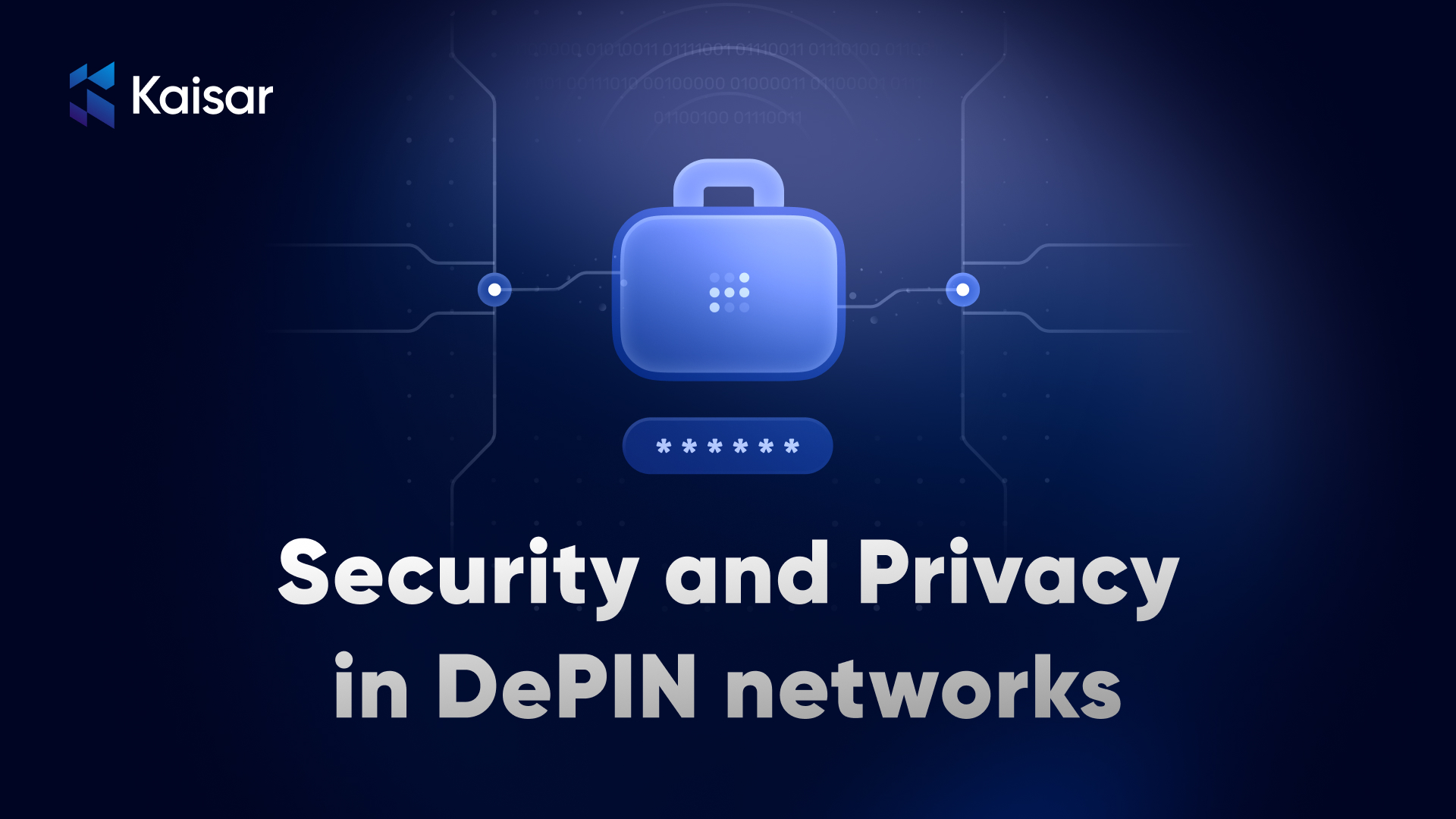Decentralized Physical Infrastructure Networks (DePIN) have emerged as a disruptor for sharing physical and digital resources. By integrating blockchain technology and decentralized computation DePIN networks provides efficient resource allocations while ensuring transparency and reducing dependency on centralized authorities.
However, with DePIN systems interfacing with a huge network of participants, hardware devices, and smart contracts ,security and privacy are of utmost importance.
In this article, we will review DePIN networks in terms of security and privacy and highlight the strategies to mitigate relatable risks.
Understanding DePIN Networks
DePIN networks work in a completely decentralized manner where computational power, storage, or connectivity is distributed to a number of participants. This model replaces traditional centralized service providers with decentralized infrastructure, thereby increasing resilience and lowering the cost of ownership.
Examples of DePIN applications include decentralized cloud computing (i.e., Filecoin, ), decentralized wireless (i.e., Helium), decentralized AI computing (i.e., Kaisar Network), and decentralized sensor networks (i.e., IoTeX).
DePIN Security and Privacy
Security Features
- Cryptography: Data transmissions are secured through encryption.
- Smart Contract Audits & Formal Verification: Reduces vulnerabilities by ensuring secure and error-free smart contract execution.
- Decentralized Identity (DID): Provides secure authentication mechanisms.
- Byzantine Fault Tolerance (BFT): Prevents malicious actions and enhances network security.
Privacy Features
- Zero-Knowledge Proof (ZKP): Allows transaction verification without revealing sensitive details.
- Fully Homomorphic Encryption (FHE): Enables computations on encrypted data without decryption.
- Privacy-Preserving Blockchains & Shielded Transactions: Enhance user anonymity and data confidentiality.
DePIN Security and Privacy Strategies
Decentralized Physical Infrastructure Networks (DePIN) face unique security and privacy challenges that require robust mitigation strategies.
Preventing Attacks
For governance and resource distribution manipulation malicious entities create multiple fake nodes to control decentralized network. Consensus mechanisms such as Proof-of- Work should be implemented to hinder such attacks, whereas decentralised identifiers and staking based models assist in verifying identities and mitigate bad actors damage.
Securing Smart Contracts
Vulnerabilities in smart contracts results in massive financial loss and governance failure. Regular audits, formal verification methods, and a set number of distinct people are required to approve contracts to reveal exploits and secure contracts.
Keeping Data Integrity
Compromised data can corrupt computations and cripple operations. Techniques such as cryptographic hashing, immutable ledgers, and consensus mechanisms should be taken into consideration preserving the integrity of data and preventing edits without authorization.
DDoS Attacks
DDoS attacks overburdens a DePIN network with too many requests, resulting in unforeseeable operational errors. Rate-limiting, traffic filtering, and decentralized storage are some techniques via which DePIN would offset these attacks, along with blockchain verification to register malicious requests evermore.
Protecting Transaction Data
Many transaction-driven public blockchain ledgers contains details about transactions, with security risks exposed.Techniques such as Zero Knowledge Proofs can ensure confidentiality
and proper anonymization.
Preventing metadata leakage
Though recorded traffic appears encrypted it can still expose consistent patterns via metadata. Implementing decentralised relay networks , dummy traffic generation can prevent network data breaches carried forward by attackers.
Securing edge devices
In DePIN networks, IoT machine sensors connected to other alternative nodes stand a risk if not secured across the lifecycle. Techniques such as HSM, TEEs on Intel SGX, and regular firmware updates are modes of strengthening device security to avert potential exploits.
Conclusion
There is no denying the fact that there are several challenges developers face when building DePIN networks focusing on security and privacy.
Given the public nature of many blockchain-based DePIN projects, users or devices could easily become targets for a variety of malicious actions that could cause losses in transaction confidentiality or integrity.
DePIN must implement mechanisms that minimize unnecessary exposure of public ledgers and analytical data related to individual behaviors. By integrating various privacy and security strategies mentioned in the article DePIN networks can establish a secure and credible foundation for decentralized computing.
Kaisar DePIN is at the forefront of this evolution, pioneering decentralized AI infrastructure optimized for distributed computing. Built on blockchain technology, it harnesses spare GPU resources to enable efficient, scalable, and cost-effective AI processing.
Join Kaisar DePIN today and be part of the future of decentralized AI computing.

